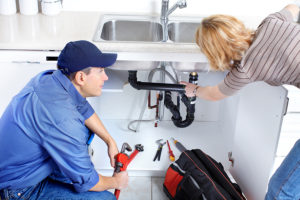 One of the nightmares of any homeowner is the idea of sewage coming up from the pipes and surging through sink drain holes, tubs, and toilets, or even filling the basement.
One of the nightmares of any homeowner is the idea of sewage coming up from the pipes and surging through sink drain holes, tubs, and toilets, or even filling the basement.
Unfortunately, for some homeowners, this isn’t just a bad dream; it’s a reality that can happen with heavy rainfall that results in minor flooding within an area.
There is, however, a straightforward solution to help prevent that issue in many situations, and it’s not that expensive. It’s called a backwater valve.
How Do Backwater Valves Work?
A backwater valve is installed in your drain pipe at a point that’s close to where the wastewater from your home leaves the building and flows off the property and into the sewage system of your town or city. It’s a simple mechanism that works on the principle of water flow. The valve has a hatch that usually remains open. As water from the home flows out, the hatch stays open, allowing for normal drainage.
However, if heavy rainfall occurs and the sewage system becomes overwhelmed, this can often result in sewer water flowing back up through pipes and into homes, even if the street itself isn’t flooded. Once a backwater valve’s hatch detects water flowing into the house rather than out of it, this reverse flow closes the hatch, preventing sewer water from backing up into the home.
Get The Help Of Experts
This is a relatively inexpensive precaution to prevent sewage backup compared to more elaborate alternatives such as sump pumps and basement/foundation waterproofing, which can cost tens of thousands of dollars.
However, installing a backwater valve requires expertise. The area may have to be dug into in order to locate a suitable valve location. Once installed, however, this is an excellent first line of defense against low-level flooding from sewers. If this is something you’re interested in, contact us today, and we will find the plumbers who can protect your home against sewage backup.
